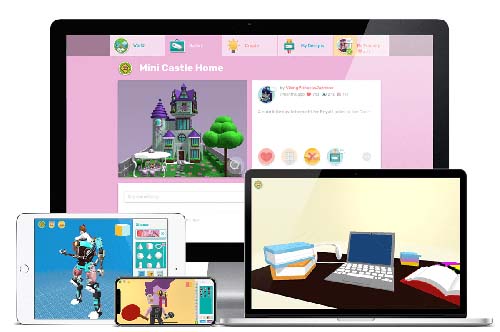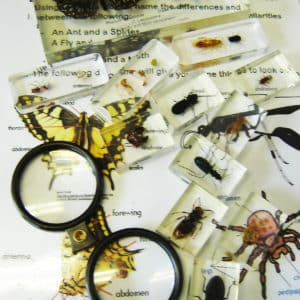NSW K – 10 Science Syllabus mapping for all our incursions
NSW Science & Technology Syllabus Content
A student:
STe-7DI-T
identifies digital systems and explores how instructions are used to control digital devices
STe-2DP-T
develops solutions to an identified need
ST1-11DI-T
identifies the components of digital systems and explores how data is represented
ST1-2DP-T
uses materials, tools and equipment to develop solutions for a need or opportunity
ST2-7MW-T
investigates the suitability of natural and processed materials for a range of purposes
ST2-11DI-T
describes how digital systems represent and transmit data
ST2-2DP-T
selects and uses materials, tools and equipment to develop solutions for a need or opportunity
ST3-7MW-T
explains how the properties of materials determines their use for a range of purposes
ST3-11DI-T
explains how digital systems represent data, connect together to form networks and transmit data
ST3-2DP-T
plans and uses materials, tools and equipment to develop solutions for a need or opportunity
Science and Technology K–6 Syllabus
(Implementation from 2027)
For explanatory points & implementation advice for each dot point, please visit the NESA Science and Technology K–6 Curriculum site
STE-DDT-01
identifies and uses technologies to make products to address user needs or opportunities
STE-PQU-01
poses questions based on observations to collect data
ST1-DAT-01
collects, represents and uses data to identify patterns and relationships
ST1-DDT-01
uses technologies and materials to design and make products to address user needs or opportunities
ST2-DAT-01
uses and interprets data to describe patterns and relationships
ST2-DDT-01
uses a design process to create products to address user needs or opportunities
ST3-DAT-01
interprets data to support explanations and arguments
ST3-DDT-01
uses design processes to create, evaluate and modify designed solutions
NSW K – 10 Science Syllabus mapping for all our incursions
Print a PDF which details K to 6 mapping of all our NSW science visits
Victorian F – 10 Science Curriculum
Identify how people create familiar designed solutions and consider sustainability to meet personal and local community needs (VCDSTS013)
Explore needs or opportunities for designing, and the technologies needed to realise designed solutions (VCDSCD018)
Visualise, generate, and communicate design ideas through describing, drawing and modelling (VCDSCD019)
Sequence steps for making designed solutions (VCDSCD022)
Recognise the role of people in design and technologies occupations and explore factors, including sustainability, that impact on the design of solutions to meet community needs (VCDSTS023)
Critique needs or opportunities for designing and explore and test a variety of materials, components, tools and equipment and the techniques needed to create designed solutions (VCDSCD028)
Generate, develop, and communicate design ideas and decisions using appropriate technical terms and graphical representation techniques (VCDSCD029)
Plan a sequence of production steps when making designed solutions (VCDSCD032)
Investigate how people in design and technologies occupations address competing considerations, including sustainability, in the design of solutions for current and future use (VCDSTS033)
Critique needs or opportunities for designing, and investigate materials, components, tools, equipment and processes to achieve intended designed solutions (VCDSCD038)
Generate, develop, communicate and document design ideas and processes for audiences using appropriate technical terms and graphical representation techniques (VCDSCD039)
Develop project plans that include consideration of resources when making designed solutions (VCDSCD042)
Print a PDF which details P to 6 mapping of all our VIC science visits
























I just wanted to pass on how much the staff and students really enjoyed it and how perfect it was to launch our science week activities. The students were enthralled, educated and entertained – a perfect trifecta!
-Caulfield Grammar School – Big Science Big FunThanks so much for presenting at our school on Monday. Our students enjoyed the show.
-Greenvale Primary School – Big Science Big FunFizzics Education curated a thoughtful and hands-on experience for the children, incorporating practical, skill-based learning activities and followed by a science presentation at the end of the event involving liquid nitrogen. This was delivered safely and effectively, capturing both the children and the parents for the duration of the presentation.
-Macquarie Bank – Family Fun DayFizzics Education ran a show today at our school and it was wonderful. He was a great facilitator and the show was age appropriate and well done.
-Mount Zion Early learning centre – Little Science Big FunI just wanted to pass on how much the staff and students really enjoyed it and how perfect it was to launch our science week activities. The students were enthralled, educated and entertained – a perfect trifecta!
-Caulfield Grammar School – Big Science Big FunThanks so much for presenting at our school on Monday. Our students enjoyed the show.
-Greenvale Primary School – Big Science Big FunFizzics Education curated a thoughtful and hands-on experience for the children, incorporating practical, skill-based learning activities and followed by a science presentation at the end of the event involving liquid nitrogen. This was delivered safely and effectively, capturing both the children and the parents for the duration of the presentation.
-Macquarie Bank – Family Fun DayFizzics Education ran a show today at our school and it was wonderful. He was a great facilitator and the show was age appropriate and well done.
-Mount Zion Early learning centre – Little Science Big Fun